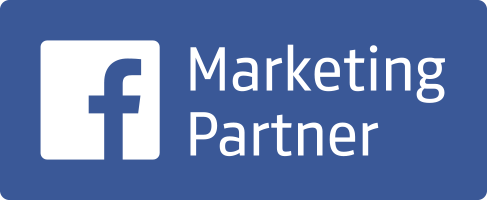
Hi contractors! Are you ready to tackle new projects and grow your construction business? You’re in the perfect place. In an increasingly competitive market, mastering effective lead generation strategies is vital for construction professionals aiming for the top.
In this article, you’ll learn how to refine your strategy for success by combining the reliable base of traditional methods with the flexible framework of digital techniques.
What is lead management?
Lead management is a strategy that involves tracking and managing potential customers, or leads, throughout the entire sales pipeline. It enhances customer experience, saves time and money, and boosts profit.
For contracting businesses, adopting an efficient lead management system means you’ll be able to understand and engage with prospective clients better.
It helps you categorize your leads based on their interest and readiness to undertake a construction or home improvement project. By nurturing these leads with tailored communication, contractors can guide them from initial interest to the final handshake.
This process not only streamlines the path to conversion but also optimizes the allocation of resources, ensuring that efforts focus on leads with the highest conversion potential.
Implementing smart lead management practices enables businesses to build a robust, organized, and strategic approach to growing their customer base and driving sales.
Effective lead management typically entails four key components:
- Generation
- Capture
- Organization
- Nurture
Proper lead management involves all of the following stages; however, this article will focus mainly on the capture-to-nurture stages.
Recognize why your leads are stuck: Why do leads get stuck in the sales funnel?
Generating leads is great, but not if they don’t end in sales. Leads often find themselves caught in various stages of the sales funnel for a multitude of reasons. Understanding these roadblocks helps refine your strategies and ensure a smoother transition from prospect to loyal customer.
Here are three main roadblocks:
- It’s not the right target market. If you’re fishing with the wrong bait, the fish won’t bite. Make sure you’re reaching the right audience.
- There’s an issue with your service. Check out your service to make sure the issue isn’t your prices, branding, or value proposition.
- The buyer simply isn’t ready. Fruit is only good when it’s ripe. The same goes for leads—if a lead isn’t ready to make a purchase quite yet, chances are they won’t. Sometimes, this is natural, and other times, they may have been thrown off by an underripe sales pitch that left a bad taste in their mouth.
One or a combination of these roadblocks can prevent your leads from reaching the final buyer stage. Of course, there are ways around to identify, avoid, or overcome these roadblocks. We’ll go over them below.
Lead management best practices for contractors
So, how do you smoothen the bumps in the sales funnel and guide more leads to the loyalty stage? Here’s a list of lead management best practices to keep your potential clients on track to becoming loyal supporters.
#1. Invest in CRM software
CRM (Customer Relationship Management) software is a pivotal tool for any contracting business aiming to refine its sales pipeline and enhance customer engagement.
This sophisticated software facilitates a streamlined approach to managing leads, tracking every customer’s journey from initial interest to the final deal. By incorporating CRM into your business operations, you can identify potential bottlenecks in your sales pipeline and address them quickly, ensuring a smooth transition for customers at every stage.
One of the paramount benefits of a CRM system is its capacity to identify the most effective channels for customer acquisition. This insight allows you to tailor your communication strategies, focusing your efforts on the best avenues and discarding those that fail to deliver, thus optimizing your marketing budget.
#2. Make use of your CRM’s automation tools
CRM software is armed with automation tools to simplify the management process. Here are some of the things they assist with:
Automating your lead scoring
Traditionally, lead scoring was done manually, which is a great way to make sure everything passes a human’s eyes first. However, it can be incredibly time-consuming, requiring extensive resources and effort to analyze and rank potential leads based on their value to the business.
Through automated lead scoring, sales and marketing teams can quickly identify and prioritize which leads are hot — meaning ready to buy — and which ones need more nurturing. The platform effectively eliminates guesswork and human error, streamlining the job of prioritizing quality leads.
Moving leads along the funnel
Additionally, automation also helps move leads through the pipeline with greater accuracy and efficiency, significantly reducing the risk of human error and eliminating the time-consuming manual process.
Leads are automatically advanced or nurtured according to their actions and engagement levels through defined criteria and triggers set within the CRM system. This supports teams in focusing their efforts on the right opportunities at the right time and ensures a consistent and timely follow-up process, a critical factor in converting leads into customers.
CRM software not only stores customer information but also helps navigate the complexities of the sales pipeline.
By leveraging these tools, businesses can anticipate a notable uptick in overall efficiency and effectiveness in managing potential clients.
#3. Enrich your data
Data enrichment is a key part of lead management. Enrichment entails compiling data from a variety of sources to augment the existing data you’ve collected about your potential customers.
Ultimately, it helps you get a more comprehensive overview of your potential clientele so you can personalize your marketing and nurturing efforts and land the sale.
Many CRM tools also have automatic integrations, so you and your team don’t have to manually collect customer data from third-party databases and social media profiles.
#4. Communicate with and engage potential customers
Use the right channels and methods of communication to make sure your message resonates with your audience, meeting them where they are most active and engaged.
For example, a homeowner needing contracting work might be part of a Facebook group, whereas a commercial enterprise needing similar services is more likely to be found on LinkedIn.
By identifying and leveraging these channels, be it through social media, email, or direct messaging, you can craft personalized experiences to get attention of your prospects and foster a sense of connection. This targeted approach improves the customer journey and boosts the chances of conversions.
#5. Create a sense of urgency
The best way to get anyone to do something is to put a time limit on it. Creating a sense of urgency through time-sensitive discounts and offers can significantly encourage potential customers to make prompt decisions, boosting immediate engagement and sales.
However, it’s important to uphold your promises. If a sale ends tomorrow, make sure it ends tomorrow. Failure to do this can hurt your credibility. Ensure that your offers are genuine and deadlines are real to maintain integrity and customer loyalty.
#6. Nurture and follow up
Nurturing leads is a critical component of comprehensive lead management, as it helps you maintain relationships with prospects until they want to purchase your service or product.
Your CRM system will play a pivotal role in this process by storing detailed personal information, engagement, and bidding history for each lead. This reservoir of data allows for the personalization of follow-up communications, ensuring that each interaction is relevant and timely.
Notice a lead is getting stuck before they purchase? Try offering a free estimate or consultation to see if this moves things along. Got a happy customer? Try implementing a referral program.
By utilizing specific customer information, businesses can create targeted nurturing campaigns that speak directly to the interests and needs of their prospects, significantly increasing the likelihood of conversion.
Build your lead management strategy with Build Media Group.
In the rapidly evolving construction industry, mastering the art of lead management is not just beneficial—it’s a way to stay ahead of the competition and drive sustainable growth.
By adopting a proactive approach to identifying the hurdles within your sales funnel, enhancing communication strategies, and leveraging technology, your contracting business can build stronger relationships with potential clients and smoothly guide them from first contact to loyal customers.
Remember, every lead holds the promise of a new project and a lasting business relationship.
To discover how our expert strategies can elevate your construction business to new heights, contact Build Media Group today.



